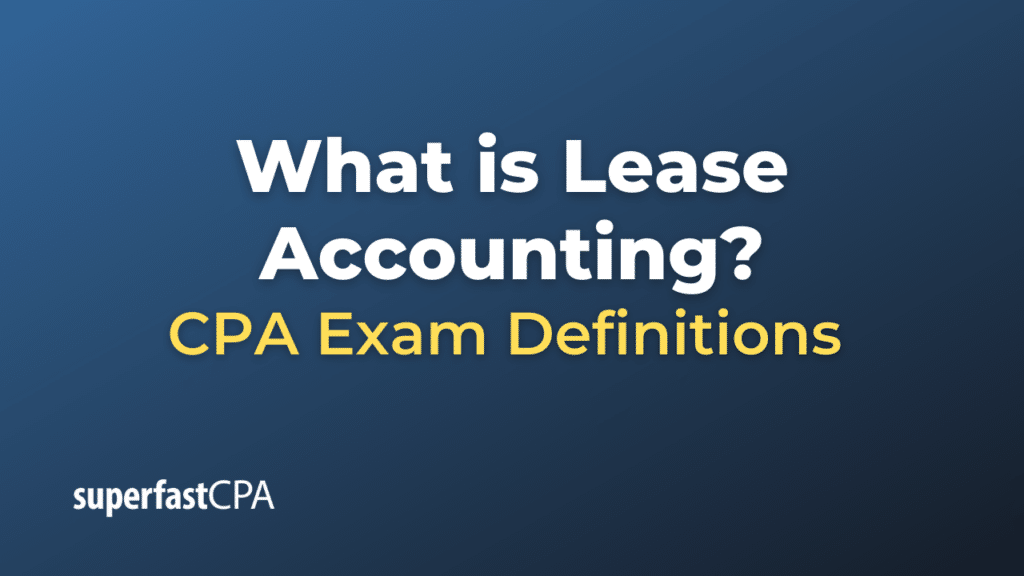Lease Accounting
Lease accounting is the method by which companies record and report transactions associated with leasing assets, such as property, plant, and equipment. The accounting treatment of leases has evolved over time and can be complex, due to the necessity of differentiating between different types of leases and their varied impacts on a company’s financial statements.
There are two main types of leases according to the generally accepted accounting principles (GAAP) and international financial reporting standards (IFRS):
- Operating Lease: In an operating lease, the lessor (the owner of the asset) retains the risks and rewards of ownership. The lessee (the one using the asset) simply pays lease payments and the lease expense is typically reported on a straight-line basis over the lease term. The leased asset is not recorded on the lessee’s balance sheet. This method is often used for short-term leases.
- Finance Lease (also known as a capital lease under GAAP): In a finance lease, the lessee assumes many of the risks and rewards of ownership. The lessee records both an asset (the right-of-use asset) and a liability (the lease obligation) on its balance sheet. Over time, the lessee also records depreciation on the leased asset and interest on the lease obligation. This method is often used for long-term leases or leases where ownership is expected to be transferred at the end of the lease term.
These methods of accounting for leases help ensure that companies accurately report their financial position and performance. However, they can be quite complex, requiring judgments about lease terms, renewal options, interest rates, and other factors.
The accounting standards have undergone significant changes in recent years, particularly with the implementation of IFRS 16 and the updates to the U.S. GAAP lease accounting rules with ASC 842, which aim to increase transparency by bringing most leases onto the balance sheet.
It’s always important to consult with a knowledgeable accountant or other financial advisor to ensure that lease accounting is being done correctly according to the latest standards.
Example of Lease Accounting
Let’s consider an example of a company that enters into a finance lease (or capital lease under GAAP).
Company A leases a piece of machinery from Company B. The lease term is five years and the annual lease payments are $20,000, to be paid at the beginning of each year. Let’s assume the present value of these lease payments is $80,000.
Here’s how Company A would account for this lease:
At the beginning of the lease:
- Company A records the leased machinery as a “right-of-use” asset on its balance sheet. The asset is valued at the present value of the lease payments, which is $80,000.
- At the same time, Company A records a lease liability of $80,000 on the liabilities side of its balance sheet.
At the start of each year during the lease term:
- Company A pays the annual lease payment of $20,000 to Company B. This reduces the lease liability.
- Company A calculates the interest expense on the lease liability for the year. Assuming an interest rate of 5%, the interest expense for the first year would be $4,000 ($80,000 x 5%). This is added to the lease liability.
- Company A also depreciates the right-of-use asset over the lease term. Assuming straight-line depreciation over five years, the annual depreciation expense would be $16,000 ($80,000 ÷ 5). This reduces the value of the right-of-use asset on the balance sheet.
At the end of each year during the lease term:
- Company A records the lease payment, interest expense, and depreciation expense in its income statement.
- The lease liability and right-of-use asset are updated on the balance sheet.
By the end of the lease term, the lease liability will have been fully paid off through the lease payments, and the right-of-use asset will have been fully depreciated.
This is a simplified example, but it illustrates the basic concepts of lease accounting for a finance lease or capital lease. The actual accounting can be more complex, depending on factors such as changes in the lease term, changes in the lease payments, or the presence of residual value guarantees or purchase options. It’s important to consult with an accountant or other financial advisor to ensure the correct accounting treatment.














